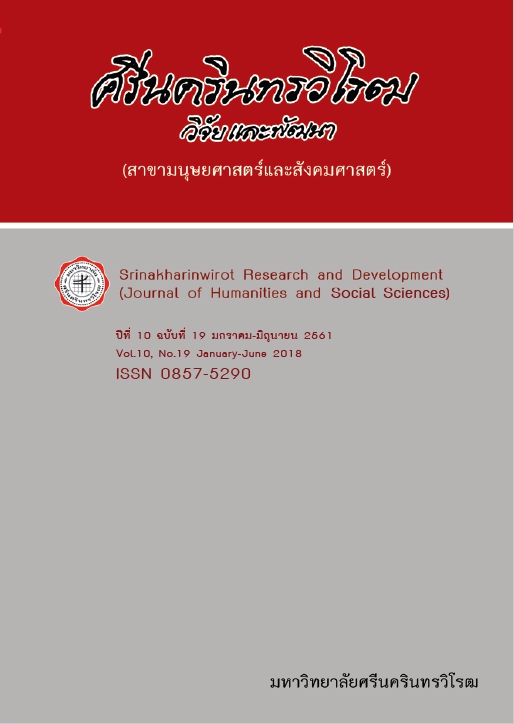การพัฒนาหลักสูตรสำหรับเด็กเร่ร่อนจังหวัดเชียงราย (CURRICULUM DEVELOPMENT FOR HOMELESS CHILDREN IN CHIANGRAI PROVINCE)
Keywords:
Homeless Children, Curriculum DevelopmentAbstract
This research was aimed at developing and studying the effectiveness for homeless children curriculum in Chiangrai province. The target group of the research included 1) 23 and 24 homeless children in the first round and in the second round staying together at Huayplakung and Thaisamut Villages and earning their incomes at Night Baazar, Muang Chiangrai District, Chiangrai Province and 2) 6 teachers of the homeless children group in each round. The experiment tools were 1) a homeless children curriculum, 2) a curriculum handbook, 3) learning plan, 4) a reflective form of using the homeless children curriculum of the teachers, 5) a reflective form of studying the learning ability of the homeless children, and 6) a recording form of the reflective outputs of the children and group teachers. The measuring tools of the effectiveness for studying the curriculum were 1) a questionnaire on the learning ability of the homeless children and 2) a questionnaire of using the homeless children curriculum in Chiangrai Province of the teachers, which were validated by the experts in technological teaching curriculum and research and curriculum development.
The data was collected by the researchers and the group teachers. The quantitative analysis included frequency, percentage, means, standard deviations, and t-dependent test. The qualitative analysis was content analysis.
The research results found that 1) the curriculum had 100 hours, which was consisted of (1) mind map, (2) background and significance, (3) principals and objectives, (4) target, (5) curriculum structure, (6) curriculum contents, (7) knowledge management, and (8) learning media, and (9) assessment and evaluation, and 2) the effective of using the curriculum. After employing the curriculum, the overall means of the homeless children’s learning capacity was at the good level, except the means of the basic living skill of the homeless children was at the moderate level. The means of before and after employing the curriculum were different at the significant level of .05.The each and overall means of the teachers’ opinions and the learning outcomes of the homeless children were at the good level and excellent levels, except the means of the basic living skill of the learning outcome of the homeless children was at the moderate level.
Downloads
References
[2] อรทัย อาจอ่ำ. (2550). เด็กขายพวงมาลัย : ชีวิตชายขายของในเมือง. ใน ประชากรและสังคม. นครปฐม: สำนักพิมพ์ประชากรและสังคม.
[3] Daniel Tanner; and Laurel Tanner. (1995). Curriculum development : Theory in practice. New Jersey: Englewood Cliffs.
[4] Kemmis, S; and McTaggart, R. (1988). The Action Planer. 3rd ed. Victoria: Deakin University.
[5] Best, W. John. (1981). Research in Education. New Jersy: Prentice-Hall Englewood Cliffs.
[6] Discoll, March Perkins. (1994). Psychology of Learning for Instruction. Boston: Allyn and Bacon.
[7] McCormick, Christine B.; and Michael Pessley. (1997). Education Psychlogy : Learning, Instruction, Assessment. New York: Longman.
Downloads
Published
How to Cite
Issue
Section
License
Srinakharinwirot Research and Development Journal of Humanities and Social Sciences is licensed Under a Creative Commons Attribution-NonCommercial-NoDerivs 4.0 International (CC-BY-NC-ND 4.0) License, Unless Otherwise Stated. Please Read Journal Policies Page for More Information on Open Access, Copyright and Permissions.



